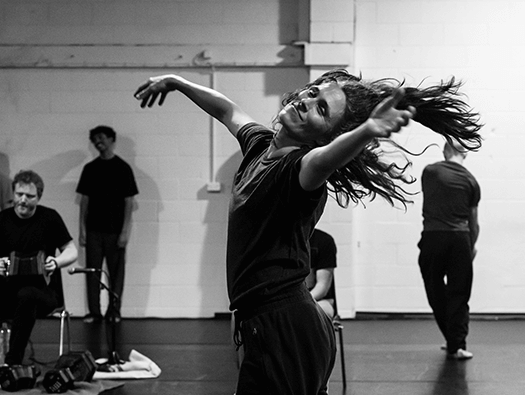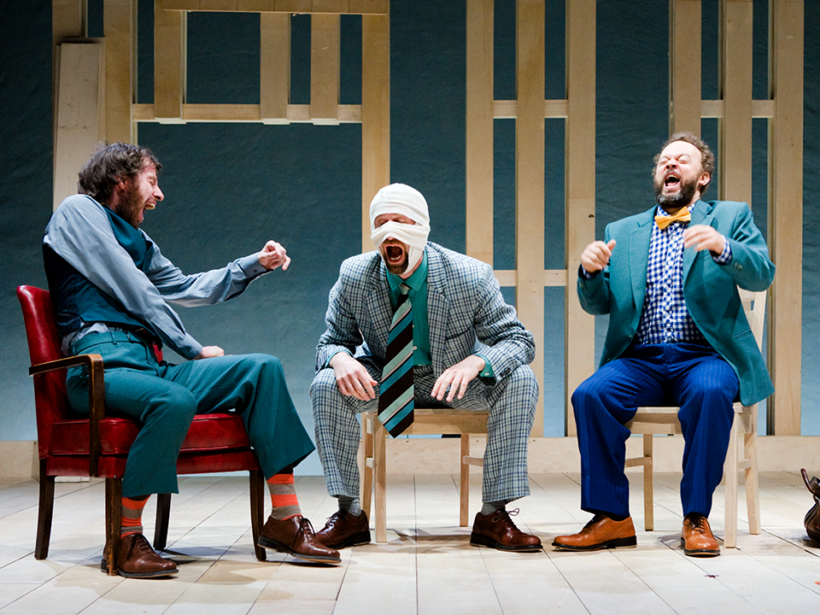Over the past ten years I have been slowly falling in love with Aotearoa.
The first time I travelled to this beautiful place was in 2008 when we performed our production of Giselle in Shed 6 as part of the New Zealand Festival. We returned with Rian in 2014 and then with Swan Lake / Loch na hÉala in 2018.
When Marnie Karmelita and Meg Williams, the new Directors of the festival visited Ireland last summer and shared with me their idea of potentially inviting an artist to be in residence in Wellington in 2019, I was excited. We talked about how important an appreciation and understanding of indigenous culture and language are to acquiring an understanding and appreciation of a place. Of how important the quality and depth of relationships are to a creative process. When the formal invitation came, the answer was yes and we agreed to press on together.
Working space
The working space I walked into on my first day of what was to be a six week residency had been transformed form an empty warehouse unit into a dance studio. The newly installed floor was made entirely from recycled timber. We were supported like this from start to finish.
We had a continuous flow of guests coming into our working space over the six weeks. Dancers from New Zealand, Australia and Europe joined the core ensemble who had travelled with me to Wellington and on occasion the working group expanded to twenty people.
We talked about how important an appreciation and understanding of indigenous culture and language are to acquiring an understanding and appreciation of a place.
We always had live music in the space. Danny Diamond the Irish fiddle player Romain Bly, Mayah Kadish and Marlies Van Gangelen from the Berlin based music collective, s t a r g a z e and Cormac Begley the traditional Irish concertina player from West Kerry. We spent three nights at the Tapu Te Ranga Marae, where we learned more about the history of Maori culture and language from Tanemahuta Gray and Rangimoana Taylor.
gently changING
During the residency, I wanted to find a different way of working, to see if I could discover a process entirely based on agreement and therefore remove any need for coercion in the realisation of a piece of theatre. In the process I learned that it does not necessarily matter what I want, that my gift will dictate what I should do and if my collaborators don’t want what I want, then I need to accept this truth and not push but gently change what needs to be changed.
Work gets made that demands to be made, that absolutely needs to be made.
Talking with our Maori mentors I saw in them the bold acceptance of the truth of their history. It is only through this acceptance that one can begin to heal the hidden violated parts of one self, of one’s family and of one’s ancestors. This is a vital process for any colonised people and their colonisers because without it, there cannot be any meaningful reconciliation.
Work gets made that demands to be made, that absolutely needs to be made.
Post-colonial people were often conditioned by their conquerors to feel embarrassed about their suffering and were encouraged to bury their collective pain. This type of imposed amnesia is without doubt the most sinister consequence of colonialism as when the time comes to open up and talk about historical events we not only have to deal with the related pain but also with a sense of shame.
All serious artists seek to find a deeper understanding of what it means to be alive. In order to explore this truthfully one must operate out of a sense of respect and love and seek empathy with the other. To give support where needed. To listen where needed. To share a story where needed.
Michael Keegan Dolan, 2019


